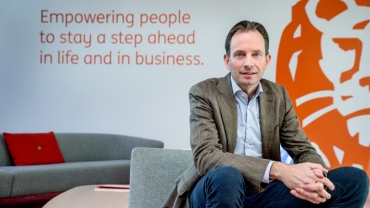
Complexity of grant schemes under control at Delft University of Technology
17/02/22
Calculation Tool delivers transparency and success for Delft University of Technology
Each year, researchers at Delft University of Technology receive various types of grants for their research projects. Administrative processing of the grants that have been awarded is complex and time-consuming. “Within the university, there are an awful lot of schemes that are all administered in a different way,” says Mignon de Ruiter. As the project manager for development and implementation of the Calculation Tool and the Projects and Accountability manager within the university’s Finance department , Ms De Ruiter is in charge of streamlining accountability for the income from grants. With PwC’s data analysis specialist Michiel van der Meijden, she talks about the complex transformation involved.

Mignon de Ruiter, Delft University of Technology
Bringing together the grant and project sides
Grant-funded projects are tricky from the financial point of view. Mignon de Ruiter explains: “You can’t just go ahead and spend the money,” There are all kinds of grant rules, legislation, and regulations to comply with. Researchers are focussed primarily on their research, whereas we are engrossed in the finance side of things. Those are actually two very different worlds that need to come a bit closer together.”
The financial administration is organised on the basis of accounting in the form of annual financial statements. Grant-funded projects have to be accounted for in accordance with the grant regulations. Due to the differences between the two ways of accounting, it’s not possible to fully understand the available spending capacity on the basis of the automatically generated project reports. This makes interim management of the grant-funded projects more difficult. And because grant regulations involve a lot of calculation rules, staff spend a lot of time calculating reports for the funding bodies. In order to deal effectively with the complexity of the many calculation rules, it was decided to utilise a Calculation Tool based on a grant schemes knowledge system.
According to Mignon de Ruiter, the tool chops up the grant schemes into smaller bits, so to speak. “In fact,” she says, “there’s a certain amount of overlap between all the different grant schemes – about 180 of them. So you chop away that overlap until you’re left with one and the same piece of information. You then look at which system that piece of information is attached to, from both the grant side and the project side. You look for the solution for that piece, and you can then continue on step by step.”
Knowledge of the grant schemes
Introduction of the Calculation Tool has also changed the work process and the role of staff members. A lot of time used to be spent on preparing a retrospective statement for the funding body, but now staff specifically have to check the information beforehand. Mignon De Ruiter explains: “The conveyor belt-type work simply has disappeared. You need to be familiar with the grant schemes so you can determine which project costs can or can’t be passed on to the funding body and can check whether the Calculation Tool is doing its job properly.”
Ms De Ruiter says that implementing the Calculation Tool has not only relieved the administrative pressure but that the new method also saves time – time that can be put to good use for advisory talks with the researchers. “You can now explain the impact of certain scenarios within a grant application much better. And you can also show the financial status of a project in real time, just by clicking a button.” She’s proud to say that “We’ve now been noticed, and we’ve even been asked to give master classes in project control at other universities. That’s because nobody else in the research world is working with this tool yet.”
Enthusiastic employees
Getting started with the Calculation Tool requires a different way of working from a very large number of the university’s staff, and that requires them to be adaptable. Ms de Ruiter realises that that’s a complex challenge: “Staff really need to adapt, and that’s difficult. Everybody has been used to working – some of them for years – according to a certain process, but with the advent of the Calculation Tool, the process sequence has been altered. So we knew right from the start that we had to get everybody involved in every step.” “The transition must really become the story of the employees,” says Michiel van der Meijden. “Ultimately, everybody contributes. At the interim meetings, for example, they explain the progress of the project themselves.”
It was an absolute must that De Ruiter and her team should take all the time they needed for this transition to a new system and work process. “If you also want to get the employees to understand why we’re making the transition,” she says, “then just identifying the complex system processes isn’t enough. It’s important to get people enthusiastic and motivated about this new way of working. Everything is a process, and faster doesn’t always mean better. And that doesn’t foster understanding among the employees either. Fortunately, the interim meetings have been a success, and attendance has been high. So everybody clearly sees the added value of the transition.”
Cooperation and transparency
The fact that the transition is supported by the commitment and enthusiasm of the team and the employees means that there have been few difficult moments in the process so far. Michiel van der Meijden explains: “That really is thanks to the mutual relationship that we’ve built over the past two years. If you deliberately choose to tackle the transition together, then you’re truly prepared to go the extra mile. In the initial phase, the focus was on the grants. How is the system structured? What works and what doesn’t? We then constructed this data-analytical transformation step by step. What also helps is the open atmosphere within and between the collaborating teams. Being transparent about the status of the project also means being open about things that aren’t going well.”
Mignon de Ruiter adds that cooperation must above all transcend departmental boundaries: “The internal work processes must fit together properly, otherwise the tool won’t work. So from the project administration department I work a lot with the shared service centre. They form part of the transition, because they are where the financial accounting takes place. You also want to get the solution centre department involved, because that department will be managing the systems in the future. Last but not least, support is needed within the entire finance organisation. If there isn’t that commitment, then you shouldn’t start on the transition. The Board must understand the importance of the transition. And as the project manager, I need to be able to keep explaining why I want to do this, and why I’m so enthusiastic about it.”
Contact us


















